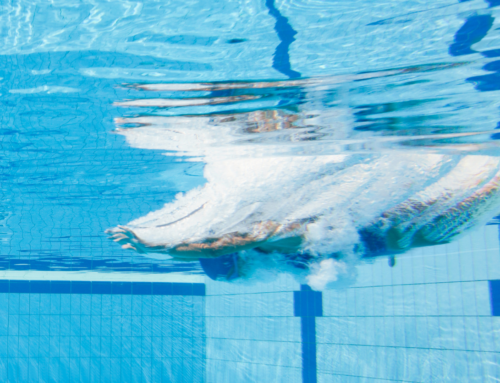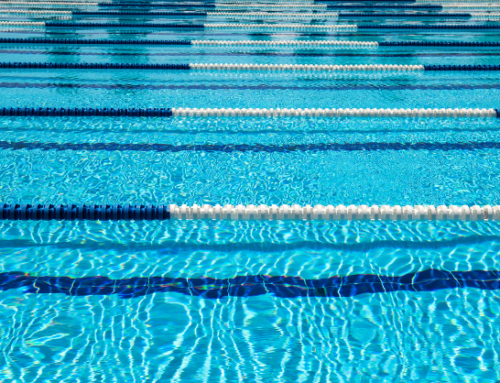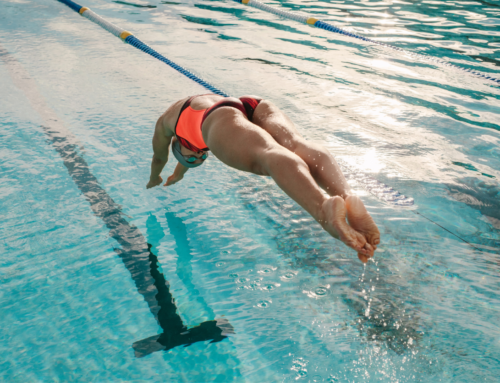Want to swim in college? Whether you sink or swim is up to you.
In college swimming, there are 559 men’s teams and 686 women’s programs. But in the United States, there are over 150,000 male high school swimmers while almost 195,000 women swim in high school. That means since most college coaches lack the time and budget to recruit nationwide, getting recruited to swim on a college team may be up to you. And while the recruiting process can be difficult and confusing, make sure you avoid these mistakes that can sink your college swimming hopes before you ever get the opportunity to step onto the starting block.
Don’t Delay Diving In
While a false start might get you disqualified in a meet, when it comes to the college swimming recruiting process, getting an early start is actually encouraged. In most cases, it’s recommended that you start working toward being recruited as early as your freshman year of high school. That start can include assembling a recruiting profile and highlight/skills video, researching the schools you might be interested in and compiling a target list, and reaching out to the coaches at those schools to express your interest in their program. Doing so early can get you on a college coach’s recruiting radar and, while NCAA Division I coaches can contact you until after June 15 following your sophomore year, making an early splash with more coaches can create more opportunities later.
While starting your recruiting early is the metaphorical equivalent of dipping your toe into the shallow end of the pool, remember that there’s no rule that says you have to begin your recruiting process in your freshman year. And you don’t have to decide on the college you want to attend in 9th grade either. But by starting your recruiting process later, coaches have less time to assess your abilities in the pool, and you’ll have less time to assess everything a college can offer you out of the pool.
Don’t Skip The Details Before You Dive In
For all but the elite swimmers, getting recruited requires you to put in plenty of work. That work starts with the creation of an online recruiting profile and a highlight skills video. But before you reach out to coaches via email with your profile and video, be sure to fill out each school’s recruiting questionnaire. In most cases, they’re online forms, though some still send out hard copies in the mail. While the questionnaire may only ask for basic information, it’s a good way to initially get noticed by a school’s swim coach. If a school that’s not on your target list sends you a questionnaire or reaches out and asks you to fill one out online, fill those out too, as it never hurts to have more options.
Once you have a profile and video created, and questionnaires completed, stay on top of things. Update your profile and video with better times, honors, and techniques as you grow and improve as a swimmer. Work to keep your grades high. Remember that bad grades can scare off coaches, while higher grades can make you a more attractive recruit and, potentially, also make you eligible for academic scholarships too.
Keep track of the schools that show interest in you and revise your target list accordingly. Keep researching schools and swim programs as you go to help determine where you might fit best, athletically, academically, and socially. Finally, make time to network with coaches and current team members at the schools you’re interested in so that you raise your recruiting profile and get a feel for where you can compete.
Don’t Choose The Wrong Lane
The fact is, less than 3% of all high school swimmers will swim for a Division I team. And only about 7% will swim competitively at any level in college. That’s why it’s important to honestly assess your talents as a swimmer and target your recruiting efforts towards schools where you can be competitive. It’s perfectly fine to aim high and have a dream school, but if your times aren’t comparable to that team’s current swimmers, you’re probably wasting time.
Research the rosters of the schools you’re interested in and see how your times and physical size match up. Ask your high school or club coaches where they think you might fit best. Further, remember that swimming is an equivalency sport for both men and women, and that means, full scholarships are rare. Have an understanding of the tuition costs and fees at every school on your list. Make sure the costs at each of those schools align with what you or your family are able to pay since most high school swimmers only receive partial scholarships.
As you can see, any number of mistakes can derail your recruiting and sink your dreams of competing in college. So, now that you know what to avoid, take a few more minutes to read over how you can make a successful splash with your swimming recruiting instead!
Did you enjoy the article ‘The Mistakes That Can Sink Your Swimming Recruiting’? If so, check out more of our articles HERE.





